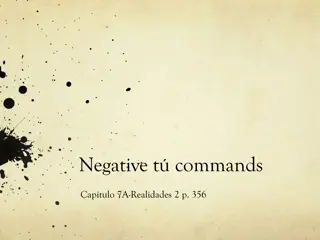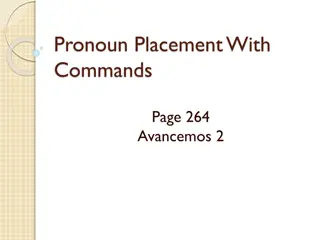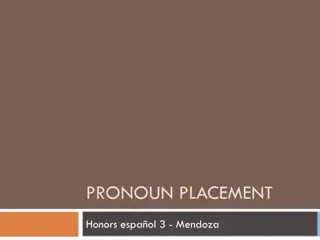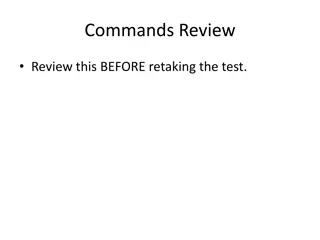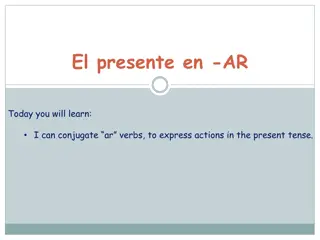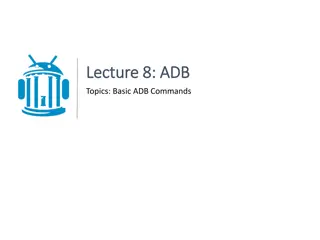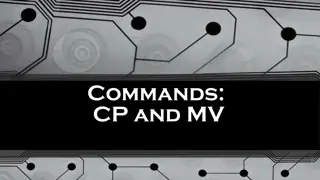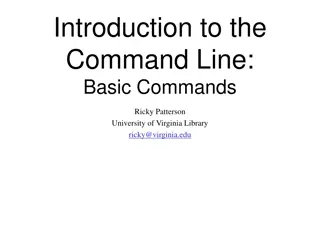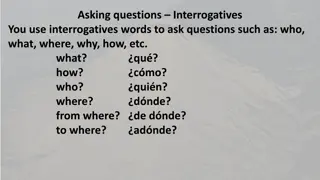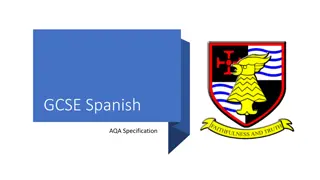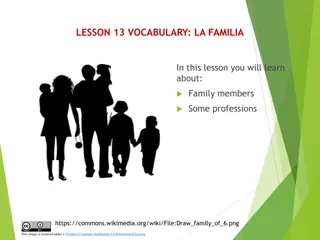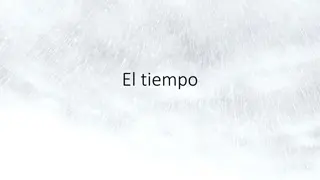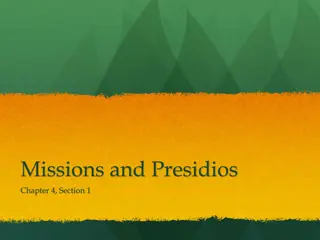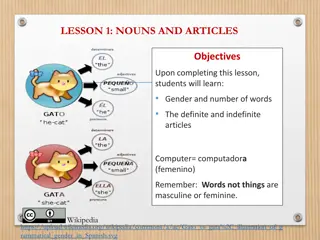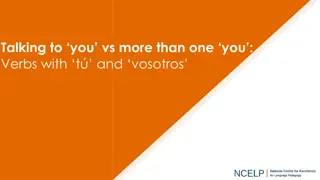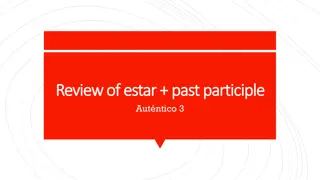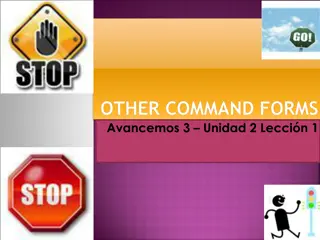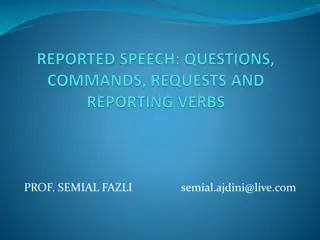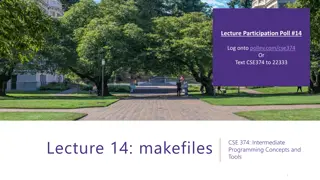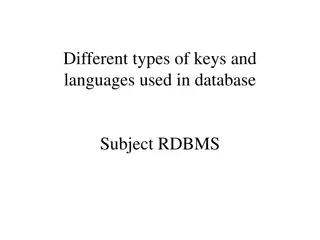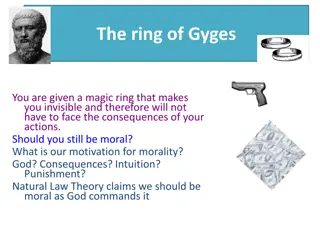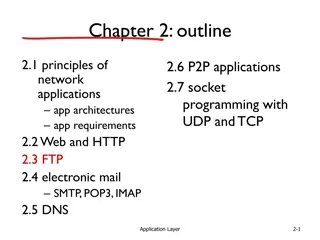Mastering T Commands in Spanish
Learn how to form affirmative and negative T commands in Spanish, including irregular forms and reflexive verbs. Understand the rules and exceptions for creating commands to communicate effectively in Spanish. Improve your command of the language with practical examples and tips for each type of command.
Download Presentation

Please find below an Image/Link to download the presentation.
The content on the website is provided AS IS for your information and personal use only. It may not be sold, licensed, or shared on other websites without obtaining consent from the author. Download presentation by click this link. If you encounter any issues during the download, it is possible that the publisher has removed the file from their server.
E N D
Presentation Transcript
T Commands: Affirmative and Negative Espa ol II
Forming affirmative t commands To form the t commands, simply use the l/ella/Ud. form of the verb in the present tense. Speak! Habla! Run! Corre! Walk! Camina! Study! Estudia! Look! Mira!
Irregular affirmative t commands There are eight verbs with irregular affirmative t command forms. These must be memorized. decir (to say/tell): di hacer (to do/make): haz ir (to go): ve poner (to put/place): pon salir (to leave/go out): sal ser (to be): s tener (to have): ten venir (to come): ven
Affirmative t commands for reflexive verbs For reflexive verbs, we attach the reflexive pronouns to the end of the command, adding an accent mark. We place the marks on what was the next- to-the-last syllable before we added the pronoun. Stand up! Lev ntate! Go away! Vete! Sit down! Si ntate! Wake up! Despi rtate!
Forming negative t commands The negative of t commands is formed using the following formula: No + yo form of the verb + opposite vowel + s Don t speak! No hables! Don t run! No corras! Don t walk! No camines! Don t study! No estudies! Don t come! No vengas! Don t drive! No conduzcas! Note: If the yo form of the verb is irregular, the negative t command for that verb will also be irregular. Stem-changing verbs will also change in the negative forms.
Negative t commands for reflexive verbs Reflexive verbs use the same formula; however, the reflexive pronoun is placed between the no and the command form. Don t stand up! No te levantes! Don t go (away)! No te vayas! Don t sit down! No te sientas! Don t fall asleep! No te duermas!
Irregular negative t commands There are five verbs with irregular negative t commands forms. These must be memorized. dar (to give): no des estar (to be): no est s ir (to go): no vayas saber (to know): no sepas ser (to be): no seas
Spelling changes (-car and - gar verbs) Some spelling changes occur to preserve the sound of the infinitives of the verbs used. In -car verbs, the c changes to qu. In - gar verbs, the g changes to gu. JUGAR: Don t play! No juegues! BUSCAR: Don t look for ! No busques! PAGAR: Don t pay! No pagues! PRACTICAR: No practiques!


